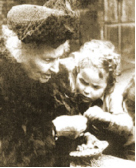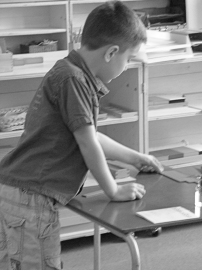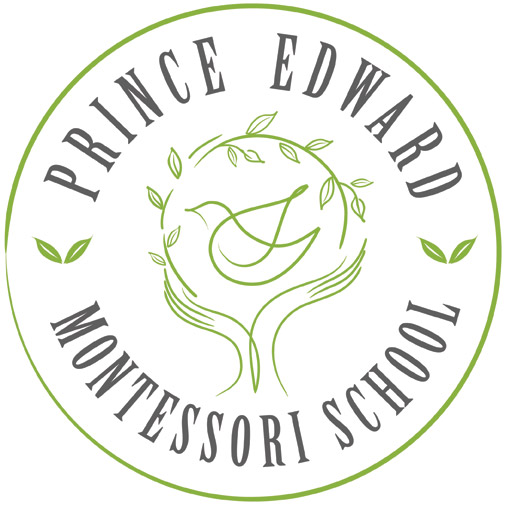The Montessori Philosophy
“I have studied the child. I have taken what the child has given me and expressed it and that is what is called the Montessori method.”
– Dr. Maria Montessori
 The Montessori approach offers a broad vision of education as an aid to life. It is designed to help children with their task of inner construction as they grow from childhood to maturity. It succeeds because it draws its principles from the natural development of the child. Its flexibility provides a matrix within which each individual child’s inner directives freely guide the child toward wholesome growth.
The Montessori approach offers a broad vision of education as an aid to life. It is designed to help children with their task of inner construction as they grow from childhood to maturity. It succeeds because it draws its principles from the natural development of the child. Its flexibility provides a matrix within which each individual child’s inner directives freely guide the child toward wholesome growth.
Montessori classrooms provide a prepared environment where children are free to respond to their natural tendency to work. The children’s innate passion for learning is encouraged by giving them opportunities to engage in spontaneous, purposeful activities with the guidance of a trained adult. Through their work, the children develop concentration and joyful self-discipline. Within a framework of order, the children progress at their own pace and rhythm, according to their individual capabilities.
The transformation of children from birth to adulthood occurs through a series of developmental planes. Montessori practice changes in scope and manner to embrace the child’s changing characteristics and interests.
THE PLANES OF DEVELOPMENT
- The first plane of development occurs from birth to age six. At this stage, children are sensorial explorers, constructing their intellects by absorbing every aspect of their environment, their language and their culture.
- From age 6 to 12, children become conceptual explorers. They develop their powers of abstraction and imagination, and apply their knowledge to discover and expand their worlds further.
- The years between 12 and 18 see the children become humanistic explorers, seeking to understand their place in society and their opportunity to contribute to it.
- From 18 to 24, as young adults, they become specialized explorers, seeking a niche from which to contribute to universal dialogue.
CASA DEI BAMBINI – CHILDREN’S HOUSE ( 3 TO 6 YEARS )
Children aged 3 -6 years old form a community of 16 children, all-working together or alongside one another. The 3-year age mix creates an optimum dynamic for learning. Older children inspire and mentor the younger children, and the younger children give the older an opportunity to grow in their knowledge and confidence through presentations and opportunities to care for them.
The teacher’s role is one primarily of guide/facilitator. In Montessori, this is why the teacher is often referred to as the Directress/or. The child is taken through a sequence of lessons that are designed to create greater and greater skill and independence. Children, once introduced to the materials, have the freedom to move about and choose their own learning activities leading to increased confidence and satisfaction.
Dr. Maria Montessori discovered that children at this age have extraordinary powers of mind. She called it “the absorbent mind.” It is a once-in-a-lifetime opportunity to absorb knowledge with peak receptivity. The Primary Montessori environment takes advantage of this opportunity by creating a classroom rich with material for learning.
FOCUS AREAS OF THE CASA ENVIRONMENT
Practical Life
The precise movements and sequences developed doing practical activities such as polishing; dressing frames, and pouring strengthen motor skills and concentration.
Sensorial
By clarifying and putting names to the senses of sight, touch, sound, taste, and smell, a child develops knowledge of the real, which is the basis for later abstraction. Many of the materials are precursors to mathematics and geometry.
Mathematics
As with the other areas of the Montessori curriculum, mathematical abstraction is mastered by manipulating the concrete.
Language
From a solid basis in spoken language, reading and writing are developed using a variety of tactile materials.
 Cultural Studies
Cultural Studies
The world’s geography and peoples are explored through such materials as maps, flags, water and landforms, and books. Activities are presented as extensions of the sensorial and language activities. Children learn about people and cultures in other countries with an attitude of respect and admiration. Through familiarity, children come to feel connected to the global human family. Lessons and experiences with nature inspire a reverence for all life.
Integrated Art and Music
The arts are incorporated into daily classroom activities. The musical element of primary appeal to young children is rhythm and the response to rhythm is physical; therefore the body is the child’s first instrument through which the movement in music is reflected and interpreted.
French
French language is introduced through songs, singing games and stories. Children from birth to the age of six are in a sensitive period for Language, and because of this they will absorb complexities, nuances and affect as well. Learning their “mother” tongue or any other language that they are presented with in a consistent way, therefore presents no problem for them.
